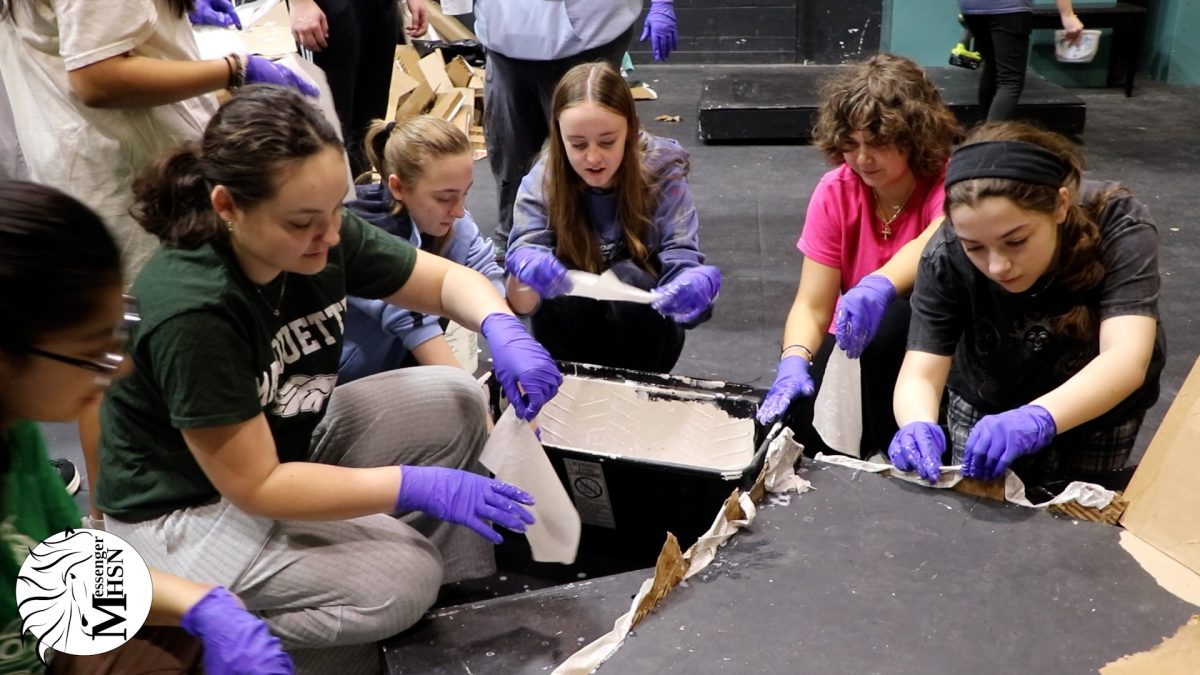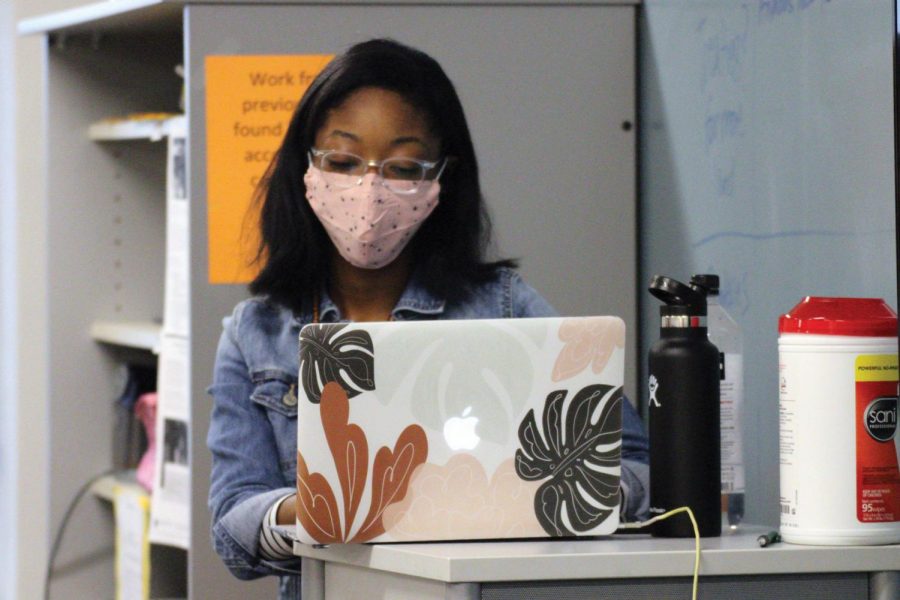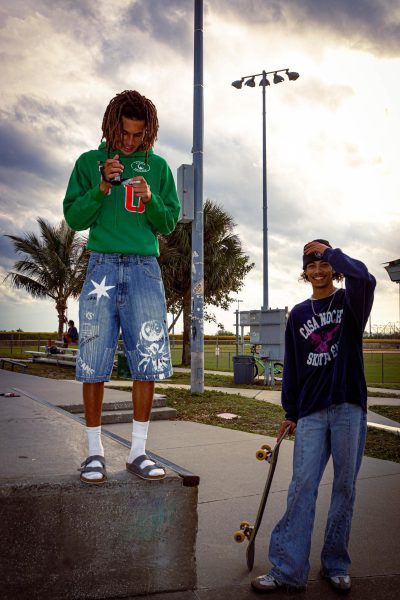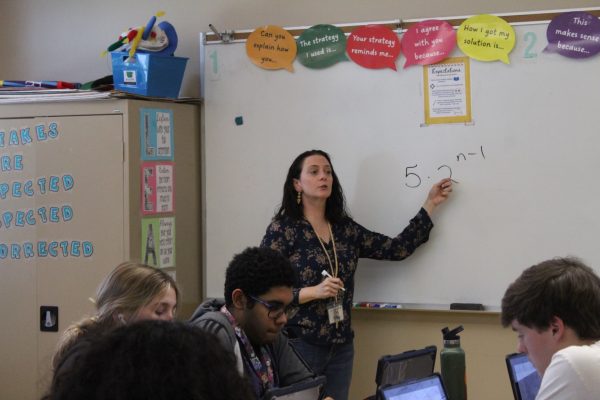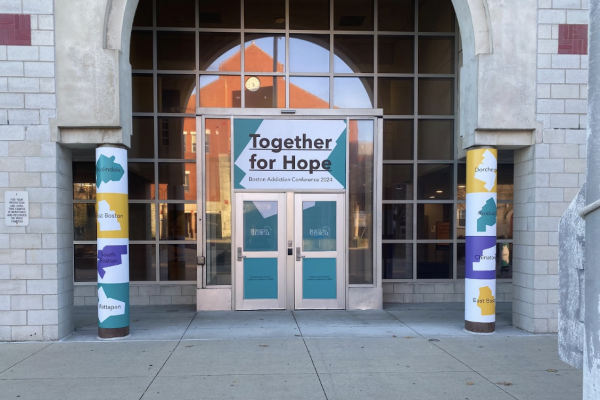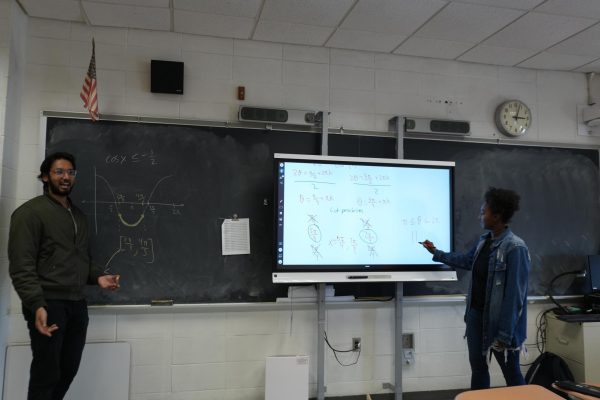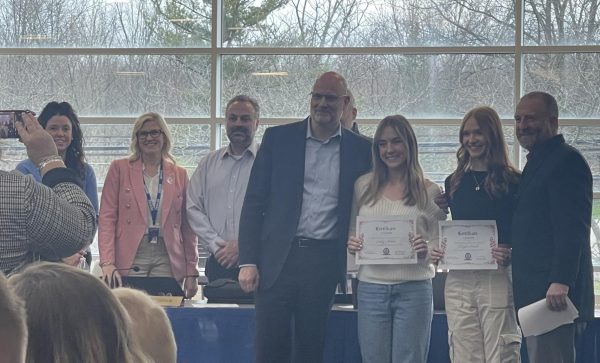Safety of return to unlimited capacity
Cleaning, social distancing continues
Ayelet Prottas
Student teacher Joy Dunna leads her class April 19. All teachers and students are required to wear a mask at all times.
May 7, 2021
For the last year, a combination of canceled events, online school, changing guidelines and COVID-19 variants has forced everyone to adjust from pre-pandemic life. Now, Park has returned to full in-person learning with the B.1.1.7 variant present and the Centers for Disease Control and Prevention has altered its recommendation for social distancing to be at 3-feet.
The B.1.1.7 Variant
After a spike of COVID-19 cases in January, cases have decreased which has allowed schools to reopen nationwide. According to epidemiologist, director of the Center for Infectious Disease Research and Policy at the University of Minnesota and a member of President Biden’s COVID-19 advisory board Michael Osterholm, cases could quickly increase if precautions aren’t taken to prevent the spread of the B.1.1.7 variant, especially in schools.
“We’re seeing much, much more transmission of B.1.1.7. Right here in Minnesota right now we have a large outbreak going on that is primarily focused on kids’ schools, sports activities (and) social activities,” Osterholm said.
We’re seeing much, much more transmission of B.1.1.7. Right here in Minnesota right now we have a large outbreak going on that is primarily focused on kids’ schools, sports activities (and) social activities, — Michael Osterholm
The B.1.1.7 variant, more commonly known as the British variant that was first discovered in the United States in December 2020, could create difficulties for schools due to its higher rate of transmission, according to Osterholm.
“I think once B.1.1.7 comes in, you start seeing transmission in your school, you (have) a whole different situation on your hands,” Osterholm said. “It’s gonna be hard to not stop transmission unless you isolate students from each other for some time, meaning basically at home, at most hybrid learning, and most likely distance learning.”
The return to in-person learning at unlimited capacity along with the variants has fueled junior Sumaya Moalim’s fear of a long-lasting pandemic.
“(The COVID-19 variants) make me feel scared that this virus is never going to go away,” Moalim said.
Due to the lack of communication from Park about the variants, junior Olivia Kelly said she was disappointed, especially due to its prevalence in Minnesota.
“If they’re holding information from us or not educating us about it, and then expecting us with full trust that we’ll be fine, I don’t trust that,” Kelly said.
Easing of guidelines
Since March 2020, the CDC has recommended 6 feet of social distancing. During March 2021, the CDC altered its recommendation to 3 feet at schools, which Osterholm said should be a cause of concern.
“The CDC last week came out with a new recommendation (that) could go from 6 feet to 3 feet for spacing, which many of us think was absolutely unfortunate. It’s not really well based on the science,” Osterholm said.
Minnesota issued new guidance for schools in January, which loosened precautions and asked schools to offer less restrictive learning models. Park transitioned to unlimited capacity learning April 12. According to Osei, based on the new guidance, an individual school in Park would need to have five percent of the school test positive for COVID-19 to revert back to hybrid learning.
“Even if we hit the 5 percent threshold that does not necessarily mean we automatically move to more restrictive,” Osei said. “That just triggers a conversation where we would have to explore what we are doing and the decision would be made based on if the school is causing the spread of positive cases.”
The CDC’s new social distancing guidelines seem suspicious, according to senior Ari Braverman, as it came out suddenly and is drastically different from the previous recommendation.
“It’s kind of weird that they shortened it out of nowhere,” Braverman said. “I realize there’s more vaccines now so it’s going to spread less but it was 6 feet and now it’s 3, it’s half the distance. That’s a lot.”
As many students and staff have had the opportunity to get vaccinated, including himself, Braverman said it will help to create a safe environment at school.
“The vaccines are going to slow the spread,” Braverman said. “And so it’s going to be better for spreading less COVID(-19) within the school, so it’s super important.”
Confident in the CDC’s decision to lessen social distancing guidelines, freshman Elena Colacci said she believes 3 feet of distancing will be a more achievable goal.
“When the guidelines were 6 feet, I didn’t really see people doing 6 feet much,” Colacci said. “But now they’re 3 feet, and I feel like that’s a lot more manageable.”
Safety at Park
Osei said starting the school year off in a restrictive model has allowed Park to loosen restrictions now that it is more prepared.
“We started the school year off even more restrictive than what the guidance suggested and we did that out of abundance of caution,” Osei said. “There was so much unknown to us about how this would work, and as we learn more about how all of this works, we feel we are able to utilize the guidance given to us as opposed to being more restrictive.”
While the COVID-19 variants are concerning to Colacci, she said she is more focused on stopping the spread of the virus as a whole.
“I’m more worried about the virus spreading more in general before we have the chance to vaccinate enough people,” Colacci said.
While she believes open vaccine eligibility has its positives, Colacci is concerned that vaccinations could cause carelessness among those who have received their shots.
“I’m a little bit worried that people will start to be complacent, especially if they themselves get their vaccine, even if there are other people around,” Colacci said “So it’s a positive and a negative.”
Even though many students and staff have the opportunity to get vaccinated, Kelly said this doesn’t mean much, as the process to being fully vaccinated can take two to six weeks depending on the vaccine.
“If people are getting (their vaccines) in the middle of April, they’re not going to be fully vaccinated until school is (over),” Kelly said. “So it’s going to make us feel more safe for the last two weeks, but it’s not going to change much.”
Even with an increase of students and staff being vaccinated, Moalim said classrooms cause her most concern due to her close proximity with her classmates.
“You don’t know if the person next to you or the person behind you has COVID(-19),” Moalim said. “And maybe they don’t even know.”
This story was originally published on The Echo on April 29, 2021.



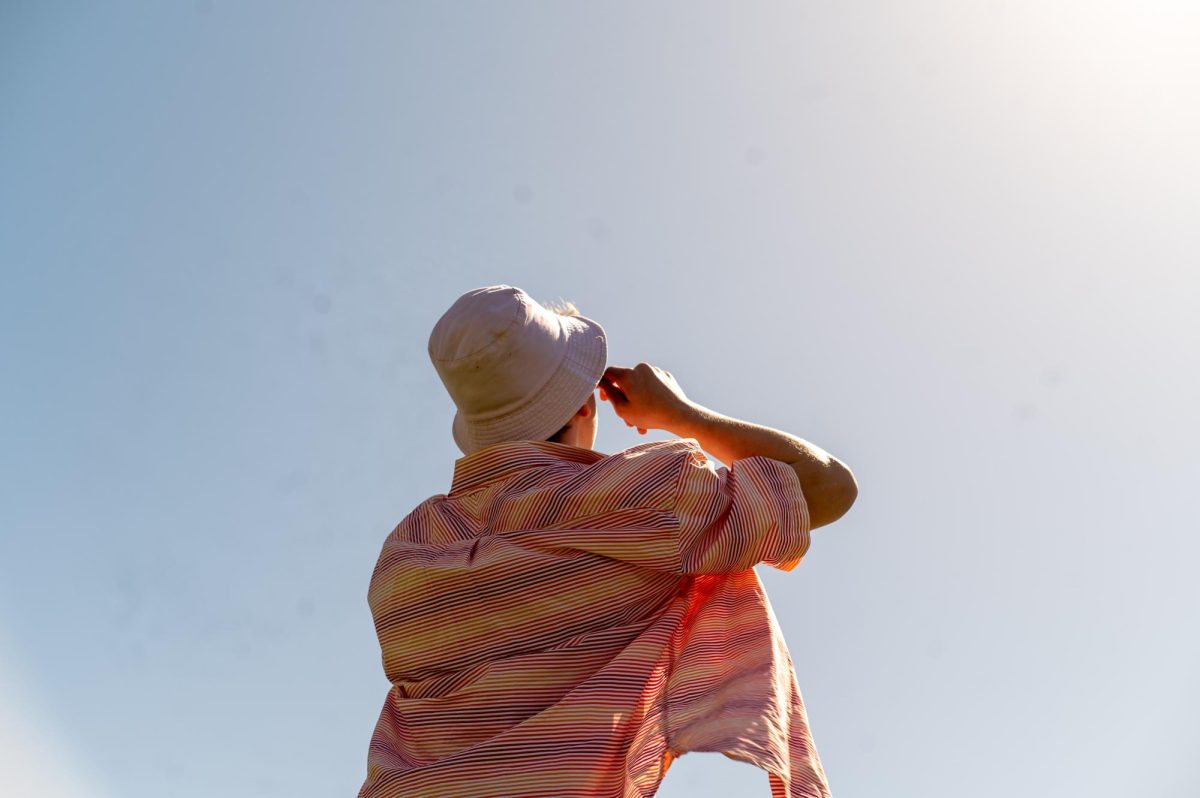







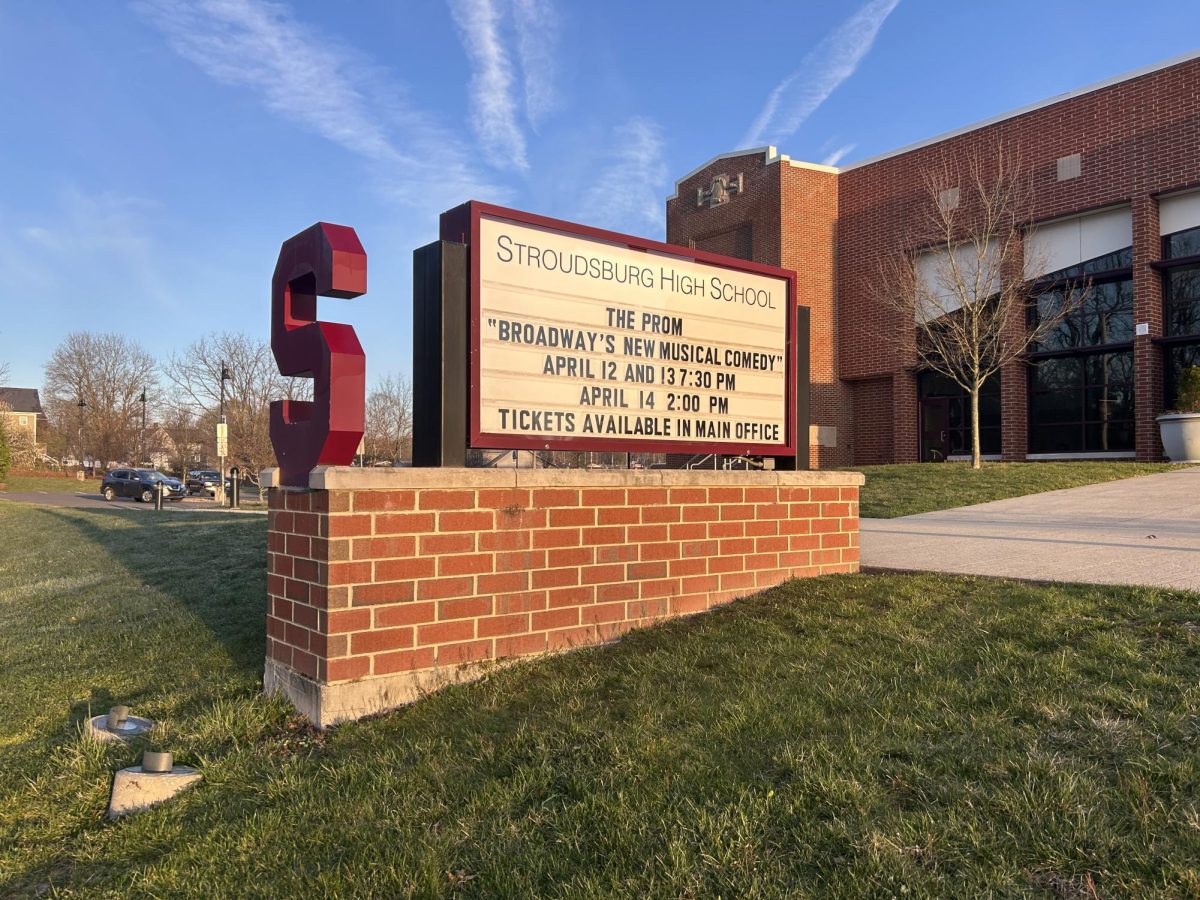
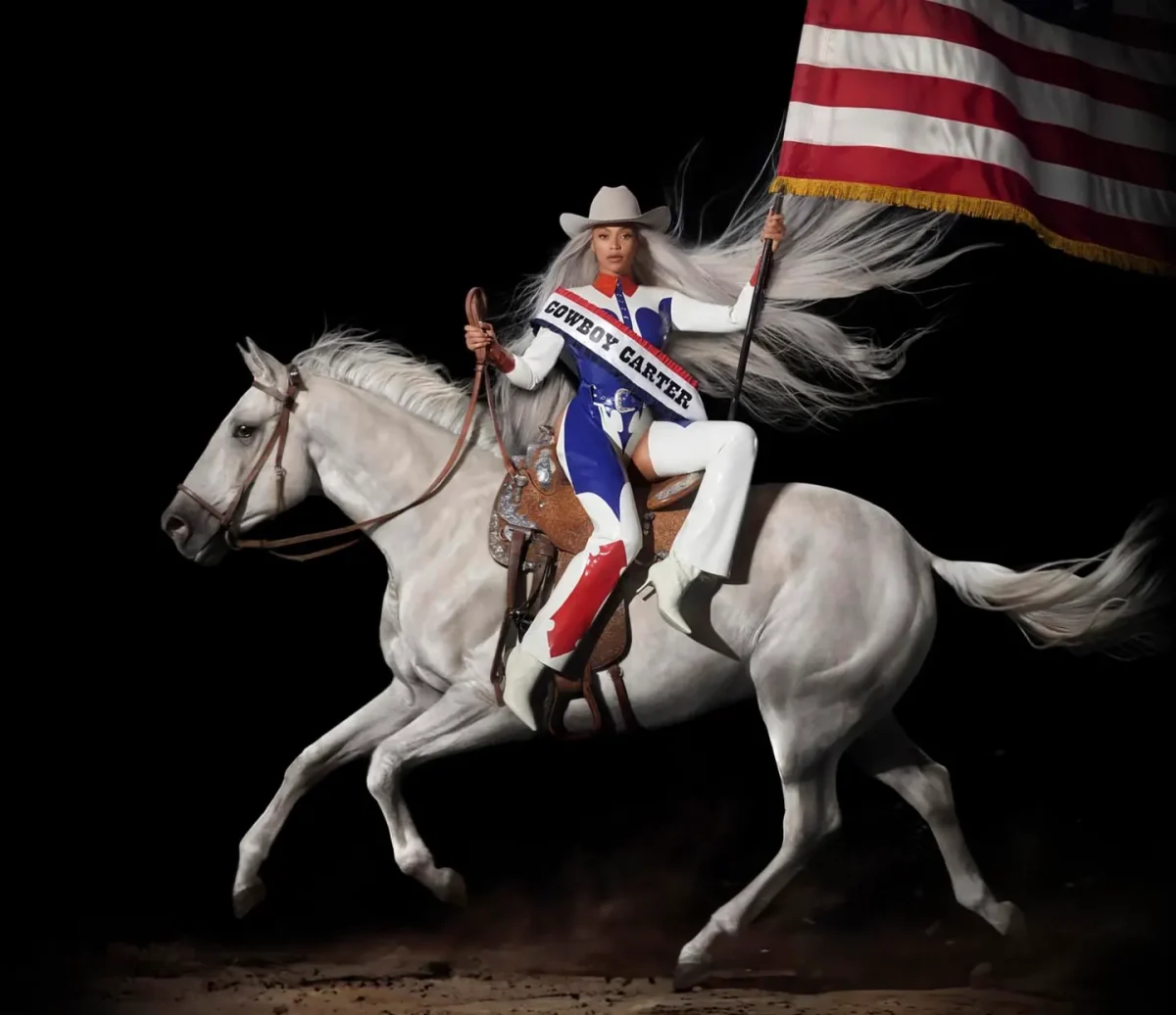















![IN THE SPOTLIGHT: Junior Zalie Mann performs “I Love to Cry at Weddings,” an ensemble piece from the fall musical Sweet Charity, to prospective students during the Fine Arts Showcase on Wednesday, Nov. 8. The showcase is a compilation of performances and demonstrations from each fine arts strand offered at McCallum. This show is put on so that prospective students can see if they are interested in joining an academy or major.
Sweet Charity originally ran the weekends of Sept. 28 and Oct. 8, but made a comeback for the Fine Arts Showcase.
“[Being at the front in the spotlight] is my favorite part of the whole dance, so I was super happy to be on stage performing and smiling at the audience,” Mann said.
Mann performed in both the musical theatre performance and dance excerpt “Ethereal,” a contemporary piece choreographed by the new dance director Terrance Carson, in the showcase. With also being a dance ambassador, Mann got to talk about what MAC dance is, her experience and answer any questions the aspiring arts majors and their parents may have.
Caption by Maya Tackett.](https://bestofsno.com/wp-content/uploads/2024/02/53321803427_47cd17fe70_o-1-1200x800.jpg)
![SPREADING THE JOY: Sophomore Chim Becker poses with sophomores Cozbi Sims and Lou Davidson while manning a table at the Hispanic Heritage treat day during lunch of Sept 28. Becker is a part of the students of color alliance, who put together the activity to raise money for their club.
“It [the stand] was really fun because McCallum has a lot of latino kids,” Becker said. “And I think it was nice that I could share the stuff that I usually just have at home with people who have never tried it before.”
Becker recognizes the importance of celebrating Hispanic heritage at Mac.
“I think its important to celebrate,” Becker said. “Because our culture is awesome and super cool, and everybody should be able to learn about other cultures of the world.”
Caption by JoJo Barnard.](https://bestofsno.com/wp-content/uploads/2024/01/53221601352_4127a81c41_o-1200x675.jpg)



